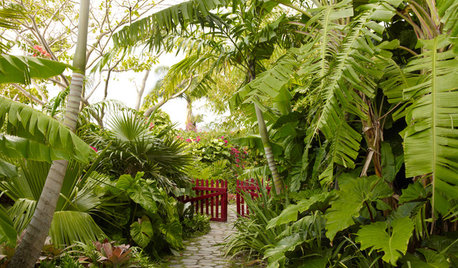Evergreen Clematis failure to thrive
les1238
12 years ago
Featured Answer
Sort by:Oldest
Comments (10)
reg_pnw7
12 years agoRelated Professionals
New Bedford Landscape Architects & Landscape Designers · Arnold Landscape Architects & Landscape Designers · Middle Island Landscape Architects & Landscape Designers · Byram Landscape Contractors · Corona Landscape Contractors · Eagle Landscape Contractors · East Hanover Landscape Contractors · Seminole Landscape Contractors · Wailuku Landscape Contractors · Raytown Landscape Contractors · Arroyo Grande Fence Contractors · Chicago Heights Fence Contractors · Columbia Fence Contractors · Germantown Fence Contractors · Sacramento Fence ContractorsNoni Morrison
12 years agolilydude
12 years agogardengal48 (PNW Z8/9)
12 years agoles1238
12 years agoEmbothrium
12 years agolilydude
12 years agoEmbothrium
12 years agobuyorsell888
11 years ago
Related Stories

LANDSCAPE DESIGNWild Gardens Bring Excitement and Beauty to Landscapes
Forget what’s expected and ‘fashionable.’ Bold gardens teeming with site-appropriate plants make for a richer experience
Full Story
GARDENING GUIDESGreat Garden Combo: 3 Wonderful Plants for a Deer-Resistant Screen
Protect your privacy and keep deer at bay with a planting trio that turns a problem garden area into a highlight
Full Story
FALL GARDENINGReflecting on a Gardening Year
Mistakes and successes, surprises and comforts. The garden helps us grow in new ways every year
Full Story
GARDENING GUIDESGarden-Friendly Native Alternatives to Overplanted Exotics
There are lots of gorgeous, wildlife-friendly native plants ready to make an appearance in your garden
Full Story
GARDENING GUIDES8 Plants for a Deliciously Fragrant Fall Garden
Scent the autumn air with the perfume of caramel corn, honey and spices by adding these intoxicating plants to your landscape
Full Story
LANDSCAPE DESIGNThe 7 Best Plant Types for Creating Privacy and How to Use Them
Follow these tips for using different kinds of plants as living privacy screens
Full Story
INSPIRING GARDENSFrom Concrete Lot to Gracious Organic Garden in Seattle
Plants, pests and even weeds have a place in this landscape, which offers an edible bounty and a feast for the eyes
Full Story
SPRING GARDENINGTop 10 Scented Plants for Your Garden
A palette of perfumed plants can transform even the smallest of gardens into a sensory delight
Full Story
GARDENING GUIDESHouzz Call: What’s Your Favorite Backyard Beauty?
The simple, honest daisy is this writer’s go-to garden flower. We want to hear which plant, flowering or otherwise, gives you special joy
Full Story
MOST POPULAR20 Ways to Work White Magic in Your Yard
Create enchanting outdoor spots with fresh white fences, florals and furniture
Full Story







madrone